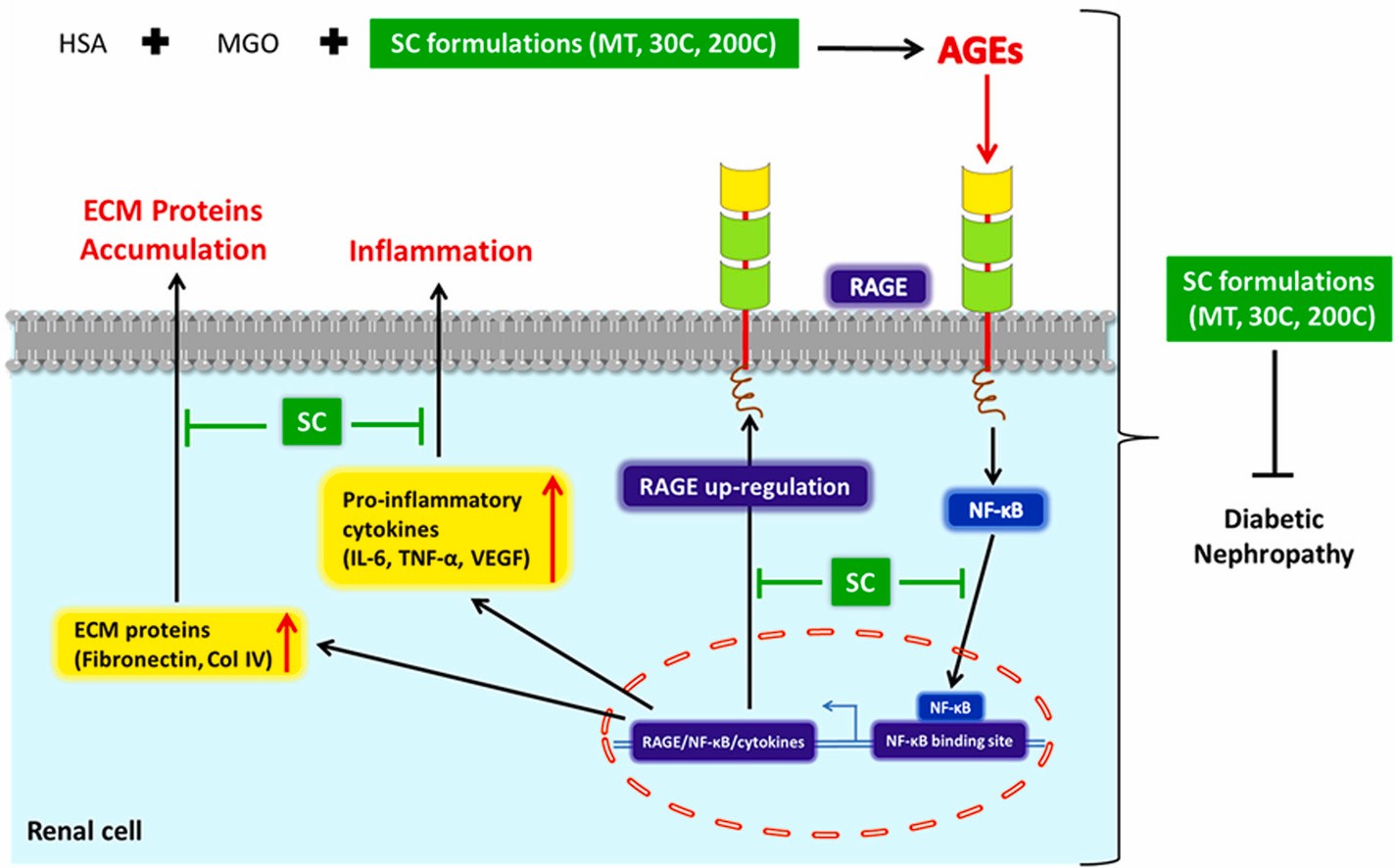
Title of the paper: Mechanistic role of Syzygium cumini (L.) Skeels in glycation induced diabetic nephropathy via RAGE–NF–κB pathway and extracellular proteins modifications: A molecular approach
Author Names: Mayura M. Apte, Ekta Khattar, Rashmi S. Tupe
Journal name, Pages, Vol, Year: Journal of Ethnopharmacology, 117573, Volume 322, 2024,
Impact Factor: 5.4
Link of the article: https://doi.org/10.1016/j.jep.2023.117573
Abstract:
Ethnopharmacology relevance: Syzygium cumini (L.) Skeels (SC), an ancient medicinal plant, is used as a complementary and alternative medicine for treating diabetes mellitus and its associated complications, such as diabetic nephropathy (DN). Phytochemicals present in SC homeopathic formulations possess anti-glycemic, anti-glycation, anti-inflammatory, and antioxidant properties. Additionally, the non-enzymatic formation of advanced glycation end products (AGEs) increases during hyperglycemia in diabetes. AGEs interaction with their receptor of AGEs (RAGE) promotes inflammation via Nuclear Factor-κB (NF-κB) and the accumulation of Extracellular Matrix (ECM) proteins, contributing to the renal dysfunction in DN. However, the molecular mechanism through which SC formulations interact with the AGEs-RAGE–NF–κB pathway has not yet been investigated. Aim: This study aims to examine the impact of SC formulations on the RAGE–NF–κB pathway and ECM protein modifications in glycation-induced DN using a molecular approach. Materials and methods: Human serum albumin (10 mg/ml) was glycated with MGO (55 mM) in the presence of SC formulations - Mother tincture (MT), 30C, 200C for 7 days. Glycated samples were added to renal cells (HEK 293) for 24 h. Subsequently, cellular gene and protein expressions of RAGE, NF-κB, vascular endothelial growth factor (VEGF), interleukin-6 (IL-6), tumor necrosis factor-α (TNF-α), collagen IV (Col IV), and fibronectin were determined using RT-qPCR and Western blot analysis. The immunofluorescence, luciferase assay, and chromatin immunoprecipitation techniques were employed to gain insights into glycation-induced NF-κB nuclear translocation, transcriptional activity, and its effect on RAGE promoter activity in SC-treated cells. Results: SC formulations significantly downregulated glycation-induced elevated levels of RAGE and NF-κB. Mechanistically, SC formulations prevented NF-κB nuclear translocation, transcriptional activity, and RAGE promoter activity. Also, SC formulations significantly attenuated glycation-enhanced expressions of inflammatory cytokines (IL-6, TNF-α, and VEGF) and ECM proteins (Col IV and fibronectin). Conclusion: Our findings enlighten the molecular mechanism of SC in DN by targeting the AGEs-RAGE–NF–κB signaling pathway, inflammatory responses, and ECM accumulation. Hence, the study validates the protective role of SC formulations and signifies its novel potential for treating DN.
